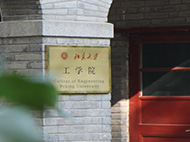主办:材料科学与工程系
报告人:Grégory F. Schneider Department of Supramolecular and Biomaterial chemistry, Leiden Institute of Chemistry
时间:7月24日(周三)上午10:00 - 11:30
地点:澳门太阳娱乐网站官网1号楼210会议室
主持人:刘磊 特聘研究员
报告内容摘要:
DNA sequencing and biomolecular sensing are among the most envisioned applications of graphene, nonetheless each step towards these targets faces important challenges. Our research exploits chemistry: from the synthesis of graphene and porous 2D membranes, to handling, functionalization and application for 2D sensing devices. We recently introduced an innovative mixed cold/hot walls synthesis for CVD graphene and developed bottom-up 2D organic films from polycyclic aromatic hydrocarbons structured by self-assembly as a network of molecularly precise nanopore arrays. Furthermore, we implemented polymer free transfer methods based either on the biphasic caging of graphene using cyclohexane or lipid clamps, ensuring graphene films free of polymer residuals allowing the formation of graphene heterostructures made from graphene-lipid superstructures. Interestingly, the chemical functionalization of graphene via the hydrogenation of the basal plane and through the electrografting of diazonium salts at the edge, brings us to better understand the interplays between electrochemistry and quantum transport, both in terms of molecular selectivity and sensitivity of next generations of graphene field effect transistor sensors. In sensing devices based on free-standing graphene, we discovered that graphene is hydrophilic in water, aiming now to understand the impact of water – conferring hydrophilic characteristics to graphene when suspended in water – on how graphene sensors in water operate in the presence of biomolecules (most particularly for nanopore and nanogap sensors). In the last part of my talk, I will present how we achieved the first dynamic tunneling graphene nanogap at the intersection of two single carbon atoms. In the coming years, I believe that chemistry will play an increasingly larger role in the design of the next generation of graphene technologies.
报告人简介:
Grégory F. Schneider received his PhD in chemistry from the University of Strasbourg in 2005. Grégory is currently principal investigator and tenure track assistant professor of chemistry at the Leiden Institute of Chemistry. He received in 2014 an ERC starting grant and a Vidi grant from NWO to carry out chemical and biological research with graphene. Prior to joining the Leiden faculty in 2013, he was a postdoctoral researcher at Harvard University with Prof. George Whitesides and at TU Delft with Prof. Cees Dekker. His research interests include nanotechnology, bionanotechnology, surface and interfacial chemistry, physical and organic chemistry, materials science, biophysical chemistry, nanofluidics, and self-assembly.
欢迎广大老师和研究生参加!








